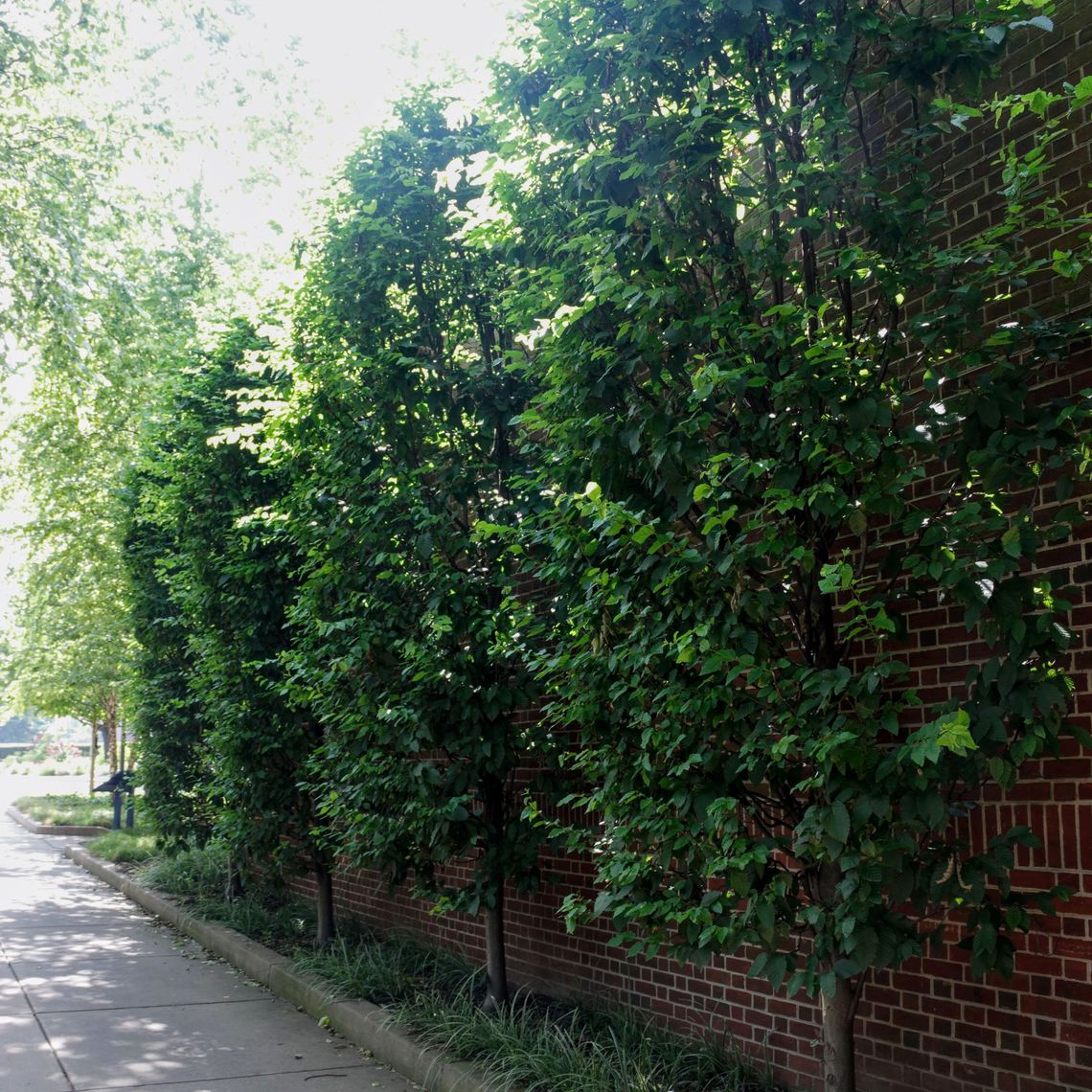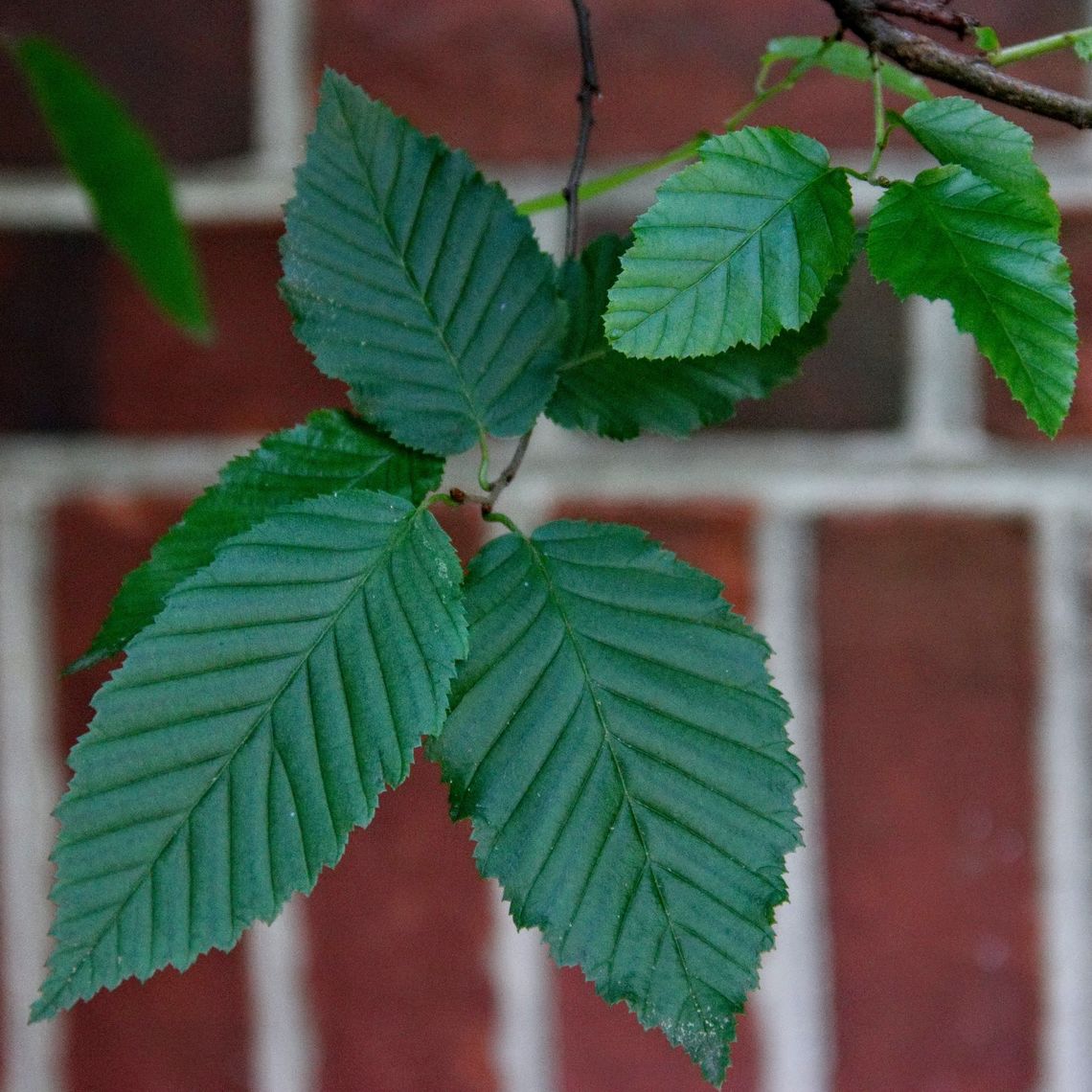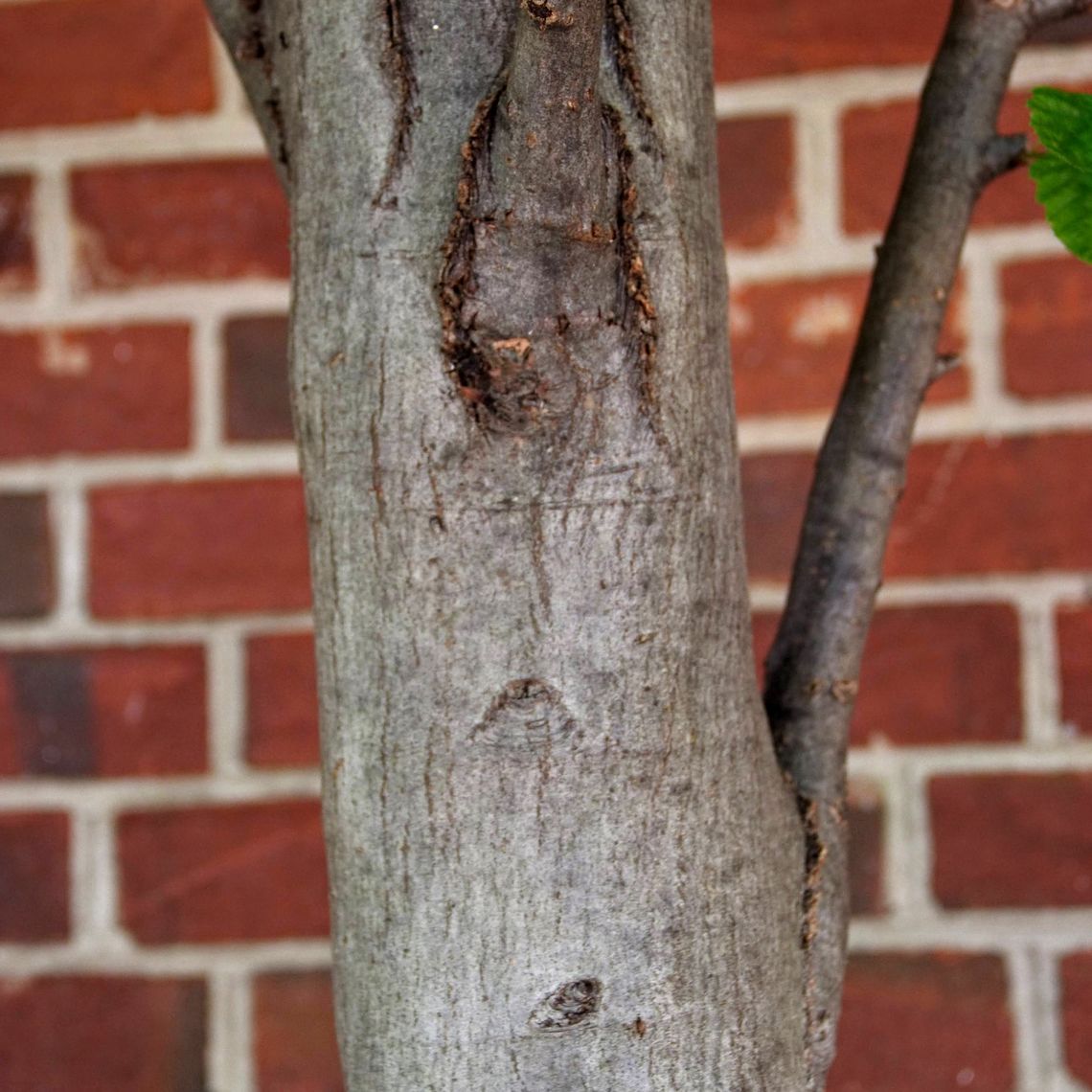European Hornbeam (Carpinus betulus)
The European hornbeam has fluted, smooth bark and distinctly veined leaves. These leaves are a deep-green, teardrop shaped, and sharply toothed. The European hornbeam does very well in varying conditions. This tree attracts birds, insect pollinators, and small mammals.
Family: Betulaceae (Birch)
Characteristics: The 2-inch to 5.5-inch-long leaves are ovate, sharply toothed, and deep-green, with prominent veins. In the fall, leaves may turn yellow. In the spring, before leaves emerge, flowers appear as long, droopy, yellow-brown male catkins or smaller, green, upright female catkins. Bark is steel gray, smooth, and has distinctive muscle-like fluting. This tree has a pyramidal to oval-rounded shape. It grows 40-60 feet high and 30-40 feet wide.
Foliage: Deciduous (leaves lost seasonally)
Geographic Origin: Europe, Asia (non-native)
Cultivation Notes: Requires low maintenance. Does best in full sun to part shade, though can also tolerate heavy shade. Prefers acidic, moist, and well-drained soils. This tree may also be grown as a hedge.
Number on Campus: 5
Sources: Dirr, Morton Arboretum, Missouri Botanical Garden



